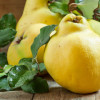Japanese quince: proper planting and care in the Moscow region
Content
general characteristics
Japanese quince is an amazingly beautiful ornamental shrub that is widely used in horticulture, floriculture and landscape design. Indeed, there are rare plants that can simultaneously decorate flower beds, flower beds and at the same time delight with delicious fruits. The quince blooms in large (3-4 cm in diameter), most often double flowers, of a varied color palette: from white or slightly pinkish to orange-red. The color of the flowers depends on the variety, and today there are several dozen of them.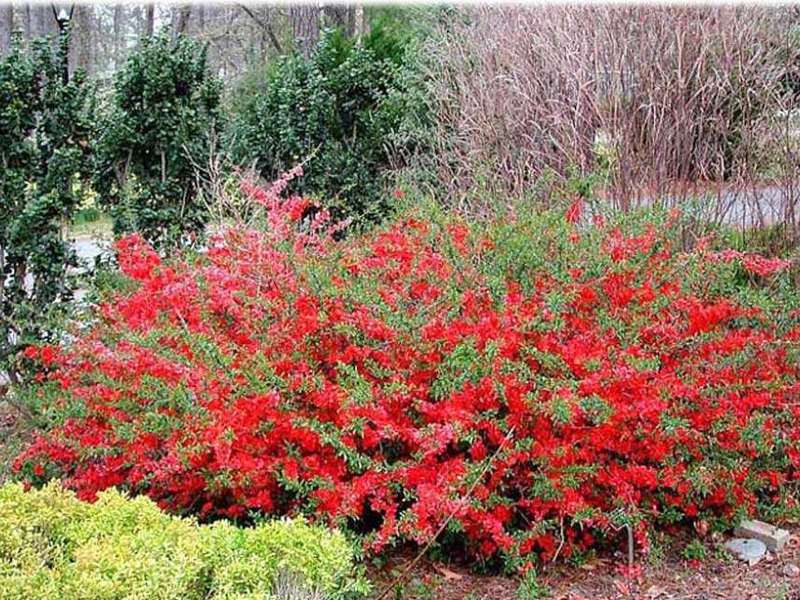
The flower shape is also quite original. The petals can be round, ovoid or pear-shaped, convex or concave, which makes the inflorescence unusually beautiful. Quince leaves are no less decorative than flowers. They are medium in size (3-5 cm in length and 3-4 cm in width), obovate, narrowed at the base, even, sometimes serrated at the edges. The leaf plates are glossy, bright green above and slightly lighter below, the petioles are short.
An adult quince bush can reach a height of 3 meters, but it all depends on the climate of the region where the quince grows and on the variety of varieties.
We often find decorative forms with a height of 0.8-1.5 m, which are distinguished by lush and long flowering, as well as an unusual color of flowers and greenery. Quince branches are slightly scaly, sometimes with short thorns. Young shoots are green, felt-like, eventually acquire a gray and then black-brown color.
Japanese quince fruits ripen in autumn. Outwardly, they resemble a pear or apple, with a slightly bumpy skin. In some countries, Japanese quince is called "northern lemon" because of the bright lemon-yellow color and sour taste of the fruit, which is due to the high content of ascorbic acid. Each fruit contains a huge amount of small seeds. Quince pulp tastes tart, so the fruits are rarely consumed fresh, but they are great for making jams, preserves and other delicacies.
The shrub begins to bear fruit 3-4 years after planting. Fruiting is regular, annually up to 3 kg of medicinal fruits can be harvested from one bush. Of course, Japanese quince is a heat-loving plant, but among the whole variety of varieties there are several that are able to withstand very low temperatures - down to -30 ° C. These are mainly decorative forms used in the design of landscape space. In general, Japanese quince is a versatile and unpretentious culture. It pleases with its flowering for a long time, bears fruit from self-pollination, and the life of the shrub is calculated in decades.
Video "Description"
From the video you will learn a lot of interesting things about this tree.
Criteria for the selection of varieties
Choosing the best varieties of Japanese quince for the Moscow region, one should give preference to winter-hardy interspecific hybrids, which include the following:
- Nivalis (Nivalis) - an impressive size (up to 1.5 m) powerful shrub with dense foliage and beautiful pale white flowers;
- Simonii is a very beautiful densely leafy shrub with dark red flowers and yellow-green fruits typical of the Japanese quince variety;
- Geisha Girl (Geisha Girl) - a powerful spreading shrub up to 1.5 m high with beautiful double flowers of cream or peach color;
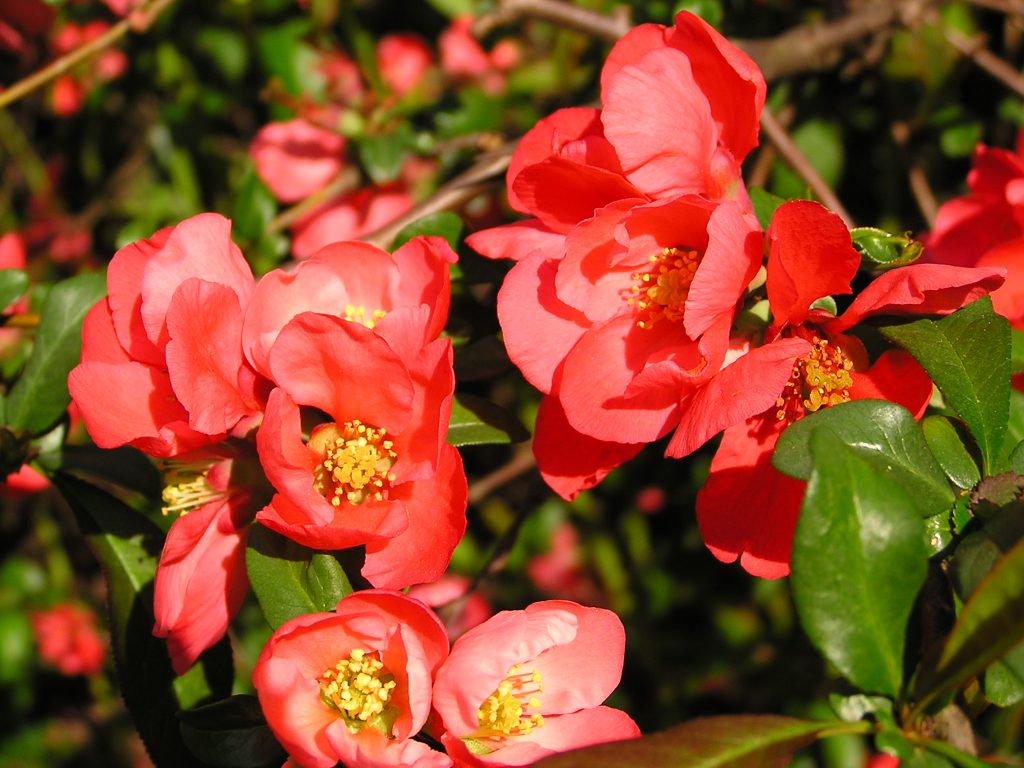
- Pink Lady (Pink Lady) - fast-growing, but fairly compact shrub with pink or crimson flowers, lends itself well to formation, tolerates light shade;
- Fascination (Fascination) - a powerful, sprawling shrub with somewhat unusual for Japanese quince, but truly charming flowers of a dark purple color, collected in groups or inflorescences.
Landing dates and rules
The main point in planting Japanese quince is the choice of location. The area for growing crops should be sunny and protected from the wind - in such a place the shrub will bloom more luxuriantly, and the ripening fruits will be sweeter and more aromatic. Quince has no special requirements for the composition of the soil, the main thing is that it is not acidic (maximum pH 6.5). The drainage properties of the soil matter - quince grows better in loose soil, in which moisture does not linger for a long time.
Since the root system of the bush is quite deep, young seedlings no more than two years old should be chosen for planting. Better if they are with a closed root system. However, if you buy a decorative bush in a specialized store or nursery, then it will certainly be in a pot. Such plants take root more easily, since it is possible to transplant them together with the substrate, and besides, it is technically easier to transplant them.
When planting Japanese quince seedlings, you should adhere to the following recommendations:
- plant young shrubs in mid-spring, when the soil warms up enough;
- when planting in groups, observe the distance between the bushes: for fruiting and decorating the garden - 1-1.5 m, for growing hedges - 0.7-0.8 m;
- the standard size of the planting pit should be 30-40 cm in diameter and 50 cm in depth;
- when planting, the pit must be filled by a third with a nutrient mixture consisting of 0.5 buckets of humus, 0.3-0.5 kg of ash and 300 g of superphosphate;
- sprinkle a thin layer of soil on top of the fertilizers (to prevent the roots from contacting the fertilizers);
- mark the seedling vertically in the planting hole, straighten the roots - the root collar should be at the same level with the soil surface;
- cover with earth by hand, slightly compacting each layer;
- at the end, the seedling needs to be watered abundantly at the root (1 bucket / bush);
- if desired, the trunk circle can be mulched.
Care features
Despite its exoticism, Japanese quince does not need any special care. She has enough standard activities that are simple and easy to do:
- the plant loves moisture, therefore it is necessary to water it often and abundantly, especially in hot summer weather;
- quince tolerates severe frosts without shelter, however, in a very harsh winter, it is advisable to cover the roots with a spruce forest, as well as bend the branches to the ground, and then cover them - if some shoots are still frozen, they should be cut off in spring;
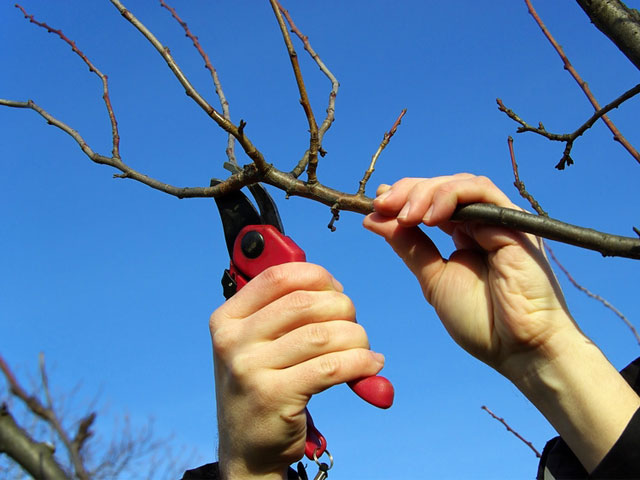
- Japanese quince needs to be cut regularly - ornamental shrubs to shape are cut several times during the season, fruiting - twice per season: sanitary pruning in spring, and shaping in autumn;
- they begin to feed the quince 2 years after planting.
You need to know that Japanese quince, planting and caring for which in the Moscow region necessarily include regular feeding, does not tolerate liquid fertilizers well. The best option for her is leaf humus, wood ash, as well as mineral mixtures containing nitrogen, phosphorus and potassium in dry or granular form. Trunks of shrubs can be mulched with peat, sawdust or any other organic material.
Major diseases and preventive measures
Japanese quince is a plant very resistant to diseases and pests, however, it is not always possible to completely eliminate the risk of disease and damage, since the shrub usually grows next to other garden and ornamental crops.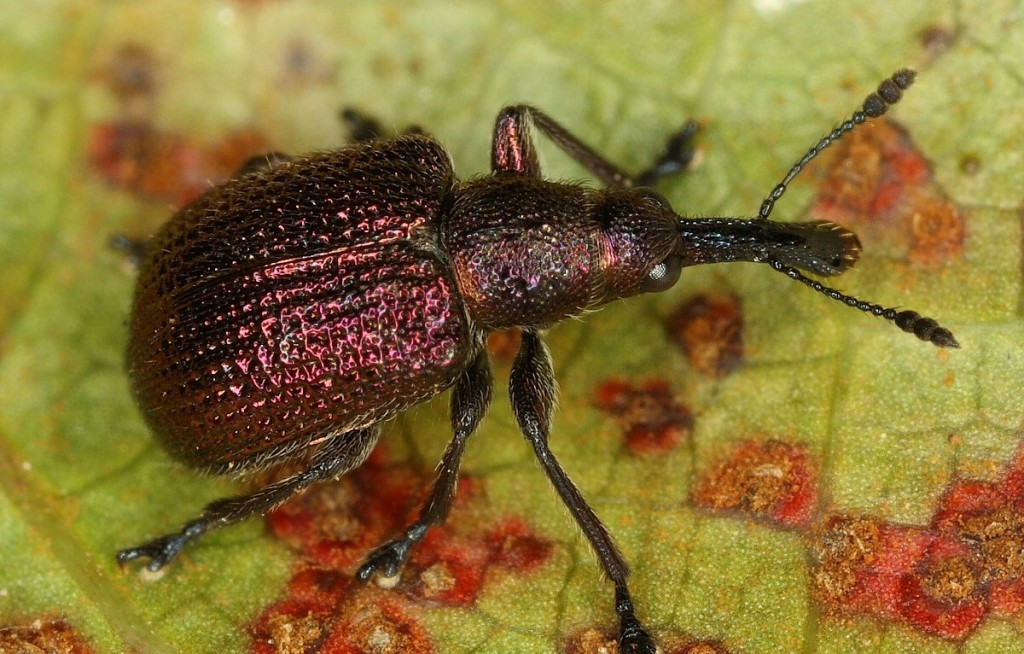 So, when grown in a garden, the stem and branches can be damaged by an apple shield, and bright fragrant buds by a bud weevil or leafworm. Quince leaves, due to the proximity of fruit crops, sometimes become prey for various mites, apple aphids, moths and other garden pests. The most common diseases are fungal.
So, when grown in a garden, the stem and branches can be damaged by an apple shield, and bright fragrant buds by a bud weevil or leafworm. Quince leaves, due to the proximity of fruit crops, sometimes become prey for various mites, apple aphids, moths and other garden pests. The most common diseases are fungal.
How to protect a beautiful tree from these misfortunes? First of all, attention should be paid to prevention. Shrubs need to be processed twice a season: in early spring and in autumn, before wintering.
Against fungal diseases and bacterial flora in spring, plants are sprayed with a solution of Bordeaux liquid or fungicides for ornamental and floral plants (Fundazol). From damage and decay of buds, drugs (Kemifos, Horus) are effective, which are used during the formation of buds.
Decorative forms intended only for flowering can be processed several times per season. If the fruits of the quince are eaten, then during their ovary and ripening, spraying is not carried out. After harvesting, autumn pruning should be done: remove all diseased branches, shape the ornamental shrub. Then collect and burn all the branches and leaves - do not leave organic residues on the ground, as they often contain spores of fungi and pest larvae. Follow these simple rules of care, and your quince will delight you with beautiful flowers and healthy fruits for many years.
Planting and Care Video
From the video you will learn how to plant and care for this fruit tree.


